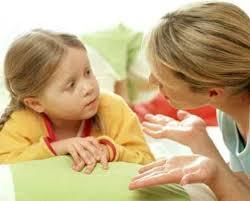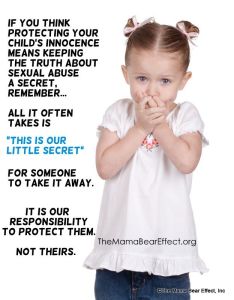When I grew up, television was a very small part of daily life, and was the only screen in the house. Telephone conversations were usually brief (and attached to the wall through the cord in the main room of the house, they only allowed limited privacy). Most daily interactions were face-to-face. Social interaction with peers and siblings certainly were face to face.
Now most homes in developed countries have several screens in different configurations: TVs, laptops, computers, tablets, phones, game consoles, DVD players, other interactive toys that come with a screen.
Children spend a lot more time facing a screen than they ever did. What is the impact of that?
Like every tool, screen media is neither good nor bad–it is HOW you used it and HOW MUCH you used it and what it DISPLACES that matters.
In this electronic age, children have more access to more education materials in quicker and more convenient ways than ever before. Media and information are powerful, but not neutral: If not taught how to discern information on the web, children do not learn how to conduct research or pick out primary source or secondary source, how to identify fact from biased blog or a complete fallacy. They may believe everything they read online–both truth and blatant misrepresentations. They need to be taught how to use information, how to cross-check, how to learn.
Education with the use of screens has replaced some of the methods of learning that were used in not-too-long-ago times. They have benefits and limitations. They can replace some older methods of research and increase efficiency and effectiveness of learning. They can connect people from far places to work together. They can bridge over differences and stigmas. However, they can also displace the interactive collaboration of listening, analyzing other people’s opinions and views, and working together interactively in real space (rather than over the internet in shared documents or through ‘attachments’ or searching to copy other people’s reports through google …).
Outside of educational screen time (i.e. the time children spend watching screens for learning, whether formal or informal), there are also the many hours a week that children spend playing or gazing at movies or music videos, or in texting incomplete sentences in stunted spelling to their friends on social media or phones. These hours often displace actual face-to-face interactions and all that comes with them: reading social cues, body language, emotions, tone of voice. Electronic communication is a poor substitute to actual interaction. Emoticons are a very crude representation of people’s facial expressions, and while they can lend ‘color’ to a message, they are not the real deal.
Children who spend too many hours staring at screens spend too few hours interacting with others and learning skills for interpersonal communication, for reading other people’s emotions and body language, for taking turns and listening.
In an article on NPR, about “Kids and Screen time–what does the research say”, researchers found that removing screen time (and effectively, the replacing of that back with social interaction and TALKING TO EACH OTHER and engaging with others), helped children be more able to recognize facial expressions. The benefits were significant even after five days of no screen time.
While some people advocate total electronics removal … I am not an advocate of removing all electronics: we live in a time where media and internet, email and web searches are enormous tools. It would be a form of social isolation to cut children off from the ability to interact with the world. However, it can be unhelpful to have too much screen time, as it displaces other kinds of social engagement that are just as important. Children do not know what they are missing when they stare at screens instead of interact with people–it is our job and responsibility as adults to help them learn to communicate and socialize.
Infants learn how to interact, how to engage, how to interpret communication and intent–through facial expression and through immediate dyadic interaction in many different settings over many interactions. It is a learning that continues throughout childhood and into young adulthood (and some may say, throughout the lifespan). We need to be mindful of not displacing personal interaction with screen time.
It is possible to do both–though that calls for moderation and boundaries (things that children need to learn, anyway). Additionally, it needs to be not only the children … adults who spend all their times staring at a little screen are displacing time of interaction WITH their children and are becoming models for what we do not want to reinforce.
There is no one recipe that would work for everyone–the right balance is different for different people at different times. What does make sense to me, is to be mindful and be honest:
- Do not demand of your children something you do not follow yourself …
* Create windows of time when screens are not used in your home: a ‘curfew’ time for phones, or an evening a week without any electronics, a ‘no virtual communication’ weekend day, maybe decide on no electronics in mealtimes (basic politeness, that …), or on other ways to limit screen time. For everyone.
- Make sure that you are a good model for turning off electronics and doing more than just lifting your eyes momentarily from one …
Young children, especially, are vulnerable to not developing what they SHOULD be developing. If their little faces are stuck to a screen rather than interested in another person, and if their interactions are the brief raising of eyes (or the parent’s brief raising of eyes) from a screen to nod or follow a direction; they would not learn how to engage well, they would not know to be good communicators, or listeners, or readers of social gestures, facial expressions, body-language, and signs.
This is not an either/or. Electronics and screen time, interpersonal social time: It can be an and/and, but it needs to be mindful, lest we raise a generation of children who do not how to interact … and fail them by not providing them the opportunities they needed to learn.
To read the article: “Kids and Screen Time–what does the research say” on NPR, click on the title, or click below:
http://www.npr.org/sections/ed/2014/08/28/343735856/kids-and-screen-time-what-does-the-research-say









You must be logged in to post a comment.